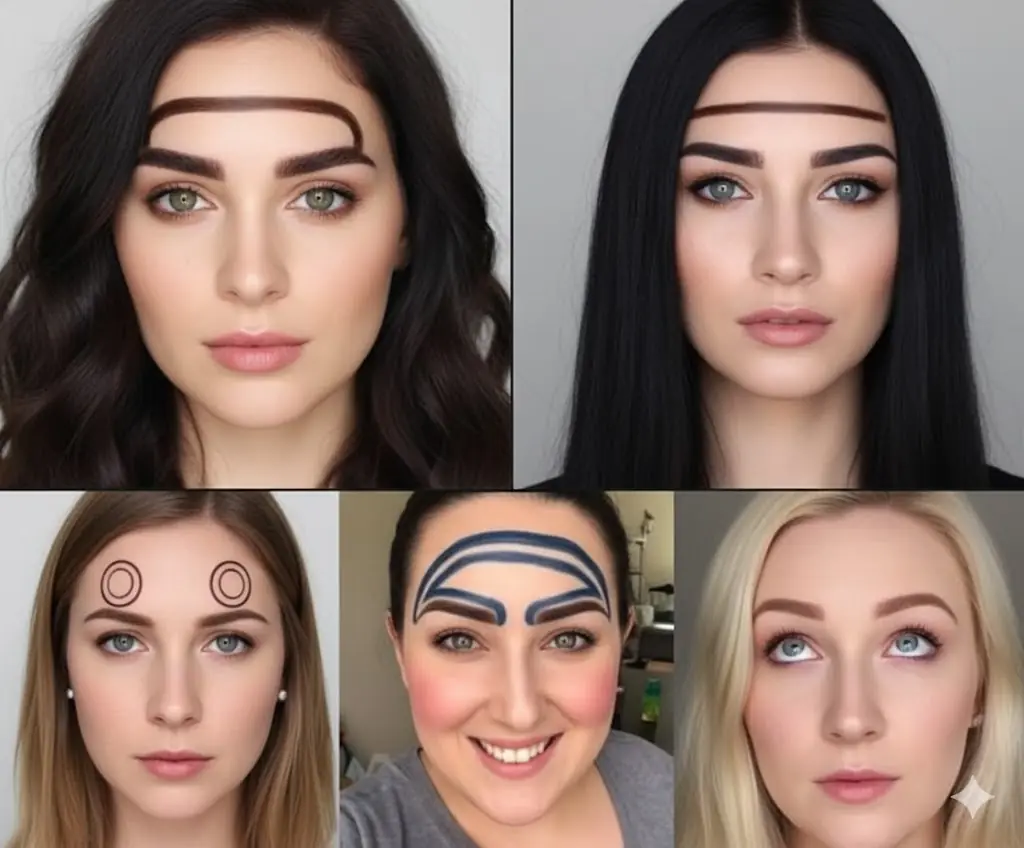
The Hidden Meanings Behind Men Wearing Earring

For centuries, earrings have served as far more than decoration — they’ve represented self-expression, spirituality, power, and cultural identity. Although many people today associate earrings primarily with women, history tells a different story: men have worn earrings for thousands of years, often carrying deep personal or social meaning.
In the modern world, seeing a man with an earring is hardly unusual. Yet behind this small accessory lies a long, fascinating history that spans continents and civilizations. Here’s what you might not know about the symbolism and evolution of men’s earrings.
1. A Deep Cultural History
Long before fashion trends shaped modern jewelry, earrings held significant meaning for men across ancient cultures. In Ancient Egypt, men wore gold earrings to symbolize wealth, nobility, and divine favor. In Greece and Rome, warriors sometimes donned earrings to express bravery, victory, or high social rank.
Across African tribes and Indigenous American communities, earrings carried spiritual and social significance. They were often part of initiation rituals, marking a young man’s passage into adulthood or his role as a protector of the tribe. Similarly, in South Asia, men’s earrings symbolized heritage, strength, and sacred duty.
Even today, in certain regions of Africa, India, and Southeast Asia, earrings remain an integral part of traditional male attire — a living reminder of the past that connects generations.
2. Spiritual and Religious Significance
In many Eastern religions and philosophies, ear piercing is viewed not just as adornment but as a spiritual practice. In Hinduism, the ritual of Karnavedha — ear piercing performed during childhood — is believed to awaken wisdom and protect the wearer from negative energies. Both boys and girls undergo this ceremony as a way to purify the body and align spiritual pathways.
In traditional Chinese medicine, the ear is considered a microcosm of the entire body, with pressure points linked to internal organs and energy meridians. Some practitioners believe that piercing specific points can help balance bodily energy, improve eyesight, or even enhance overall vitality.
This spiritual and energetic perspective reminds us that for many cultures, earrings are not just fashion — they’re a form of healing and protection.
3. Fashion, Freedom, and Identity in Modern Times
By the late 20th century, men’s earrings took on a new meaning in the West. What was once an emblem of nobility or spirituality became a symbol of style and individuality. Influential musicians, athletes, and actors — from rock legends in the 1970s to pop icons in the 1990s — began wearing earrings as a mark of confidence and rebellion.
Today, men wear earrings in endless styles: minimalist studs, classic hoops, elegant danglers, or edgy industrial piercings. Whether subtle or bold, each design helps express personal identity. For many, choosing an earring is no different than selecting a haircut, tattoo, or outfit — it’s a visual statement of who they are.
4. Symbolism, Stereotypes, and Social Change
In the 1980s and 1990s, Western society briefly attached stereotypes to men’s earrings. A common urban myth suggested that an earring in the right ear indicated a man was gay, while the left ear was considered straight. This simplistic “code” was never universal and often led to misunderstanding and prejudice.
Thankfully, those outdated ideas have largely disappeared. In today’s more inclusive world, earrings have transcended gender and sexuality labels. Men now wear earrings in whichever ear — or both — they prefer, free from rigid social expectations. This shift reflects broader cultural progress toward self-expression, diversity, and acceptance.
5. Rebellion, Non-Conformity, and Strength
Throughout history, jewelry has also served as a symbol of resistance. In the punk, goth, hip-hop, and rock scenes, earrings became a visual declaration of non-conformity. They defied traditional masculinity and challenged the idea of what men were “supposed” to look like.
For many, wearing an earring was about more than fashion — it represented freedom, independence, and inner strength. It was a quiet act of defiance that said: I decide who I am. This rebellious spirit continues today, as men across cultures embrace piercings as part of their authentic identity.
6. A Modern Mark of Status and Style
In contemporary culture, earrings can also be a statement of success. From diamond studs to platinum hoops, high-end jewelry has become a favored accessory among athletes, entertainers, and entrepreneurs. These gleaming pieces symbolize confidence, prosperity, and achievement, often complementing luxury watches and designer suits.
Yet even with the rise of luxury fashion, the message remains personal. A man might choose a simple silver hoop to symbolize humility, or a diamond stud as a reward for his accomplishments. In either case, the meaning is defined by the wearer — not the jewelry.
Conclusion: More Than Just an Accessory
The meaning of men’s earrings has evolved dramatically — from spiritual protection and tribal identity to fashion and self-expression. What once signified courage, heritage, or rebellion might now simply reflect an appreciation for aesthetics.
In today’s world, there are no strict rules. Some men wear earrings to honor their roots; others use them to express individuality or celebrate milestones. Whether it’s a cultural emblem, a statement of style, or a piece of personal symbolism, one thing remains clear:
A simple earring can carry centuries of meaning — a blend of history, identity, and self-expression that transcends time and trend.
So next time you see a man wearing an earring, remember: it’s more than just jewelry. It’s a story, a statement, and a spark of human expression.
News in the same category


Why Your Hard-Boiled Eggs Have That Weird Green Ring

Aluminum Foil Can Help You Boost Your Wi-Fi Signal

Halo Brows: The Playful, Loopy New Beauty Trend Taking Over

Inside $4,000,000,000 'mega ghost city' that's 6 times the size of New York with a fraction of the population

Why There's A Growing Trend Of Straight Men Dating Trans Women

What Really Happens When You Drink Coffee Every Morning

Joseph Gordon-Levitt Urges a Global Pause on AI Superintelligence Until Safety Measures Are in Place

The Three Nations Working Together to Protect the Mayan Jungle

The Spiritual Meaning of White Butterflies in Your Home

If You Find A Tick Inside Your Home, Here’s What You Need To Know

Magpie The Spiritual Meaning of an Unusual Encounter

When your dog looks at you for a long time, here's what it means according to experts...

France Bans Supermarkets From Wasting Food, Turns Trash Into Meals for Millions

Trump Gets His Wish as Coca Cola Launches Cane Sugar Version

Why Do We Perceive Faces in Ordinary Objects?

How Your Sleep Position Reveals If You’re Lazy

7 Clever DIY Uses for Used Teabags That Will Make You Think Twice Before Tossing Them

The Whale That Carried History In Its Neck For Over 100 Years
News Post

DIY Natural Collagen Powder for Glowing, Youthful Skin

7 Heart-Healing Foods Your Cardiologist Won’t Tell You About

Say Goodbye to Joint and Bone Pain Naturally with This Ancient Herbal Remedy

Do you belong to these 4 types of people? You should know now.

Don't throw away rotten tomatoes, the rottener the tomatoes, the more useful they are if you know these uses

Here's how to open a can in an emergency (this is so simple!)

When buying avocado, don't be greedy for big fruit or you'll "waste money", choose this point to get the most delicious and supple one.

98% of people don't know what the hole in a safety pin is for

What are the health benefits of mackerel? How to cook mackerel to make it rich and delicious

Boiled chicken often has red bones: Do this extra step to make the chicken delicious, not have cracked skin, and remove all bad odors.

Put a branch of ginger under your pillow before going to bed: A good tip both men and women need, not knowing is a waste

What Happens If You Consume Raw Garlic Daily

Take a Glass of This and Your Liver Will Be Renewed!

How to remove odors and dirt from electric kettles very simply: If you don't know, it's a waste

Tips to keep garlic from turning green after soaking in vinegar. It can be kept for a whole month and still be white, crispy, and not soggy.

Refrigerator: Do it this way, it will stay fresh for a month, no blackening or spoilage

You are doing it all wrong. Here’s the right way to use your slow cooker

You are doing it all wrong. Here’s the right way to clean your microwave
